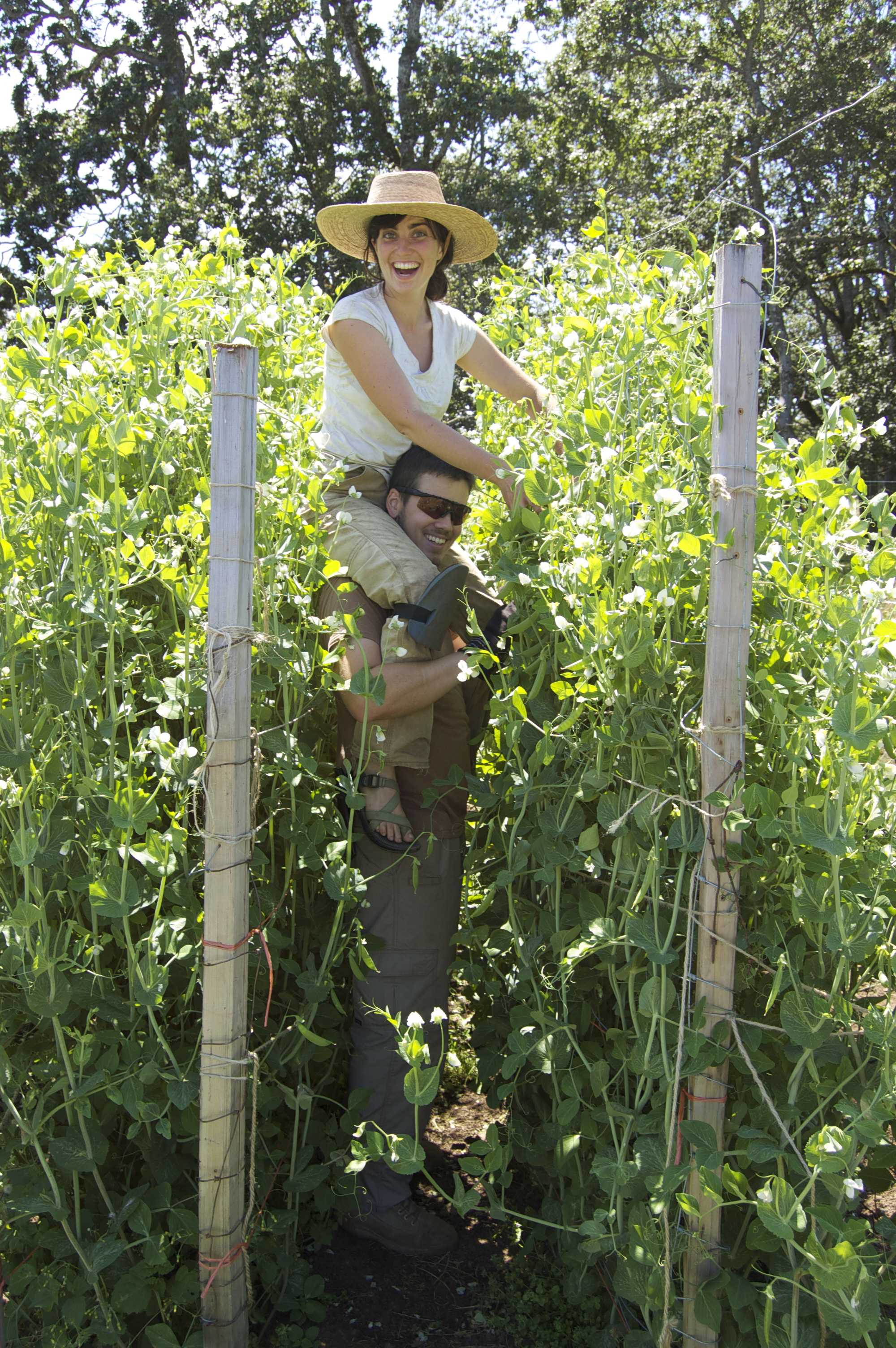This is the week that our 10 foot tall pea plants have finally started producing; let the peas begin! It has been an exceptional year for peas. Due to the cold weather our peas have grown much taller than usual, but this has also meant that they are ready for harvest much later than planned for. The peas you will find in your veggie box this week are called “sugar snaps”. This is a variety with an edible pod, so the best way to use them is eaten raw as a snack (with or without a nice dip) or lightly cooked (as in stir-fries).
This week we are also including a chive and lovage herb bunch. While chives are fairly well-known and widely available, lovage is seldom found in grocery stores so we thought we would include a few tips and recipes for preparing it. Lovage looks and tastes a bit like a cross between a celery and a parsley plant. The hollow, somewhat fibrous stems are great in dishes that are meant to simmer for a while and they make a fine straw for a home-made bloody-mary. The leaves make wonderful marinades and can also be used in soups or stews. We particularly enjoy using lovage to season lamb in a stew or a roast.
We are adding recipes for a Lovage Simple Syrup from Joe Yonan , Food and Travel editor of The Washington Post, as well as a Lovage, Lettuce, Pea and Cucumber Soup from Hugh Fearnley-Whittingstall , a food and cookery writer and broadcaster who writes for the Guardian. This is part of what he has to say about lovage:
“You can toss its lively young leaves in salads or tuck them into the cavity of a chicken or fish before roasting; finely shredded, they are a great addition to soups, stews, mash or scrambled eggs; you can steam the stems, braise the roots and use the seeds in biscuits and bread – what’s not to love about lovage?(…)The flavour is like parsley and celery combined with a hint of aniseed and curry(…)Lovage has sturdy, hollow stems, leaves that look like large Italian flat-leaf parsley and greenish-yellow flowers that are followed by golden-brown seed pods. It’s a member of the Umbelliferae family, which includes carrots, parsnips, parsley and celery. As suggested above, you can use the leaves as a punchy substitute for parsley or celery (the French call it céleri bâtard) – go easy at first because it’s stronger than both, though the flavour mellows a bit in cooking.
Lovage is native to western Asia and the Mediterranean, and was admired by the ancient Greeks and Romans for its medicinal as well as for its culinary properties – it was believed to cure everything from rheumatism to sore throats and indigestion. Medieval travellers tucked the leaves into their shoes because of their antiseptic and deodorising properties. Charlemagne was so smitten, he ordered it to be grown in all of his gardens. As the name suggests, it was also thought to be an aphrodisiac (we also used to call it “love parsley”).(…) The green leaves, cut into fine ribbons, are very good with lightly cooked summer veg. Or add them, chopped, to salads or stuffings for pork or chicken, or to fish chowder, or to just-boiled new potatoes in a mustardy vinaigrette. Lovage is delicious with eggs, too – stir leaves into omelettes, scrambled egg or frittata. Tender young stems (from the centre of the plant) can be steamed and served as a side vegetable – lovely with a summer roast chicken.”


No comments yet.